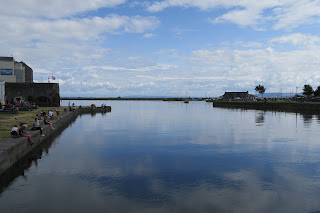An earnest conversation takes place between Irish writer Oscar Wilde and Estonian writer Eduardo Vilde
Galway’s humble beginnings were as a tiny finishing village and it grew to be an important town in the 13th century, and in 1270 fortified walls were built around it.
The Spanish Arch is thought to be an extension of Galway’s medieval city walls, designed to protect ships while they unloaded goods.
St. Nicholas’ Collegiate Church is the largest medieval parish church in Ireland still in use. Built in 1320, Christopher Columbus is believed to have worshipped here in 1477. The church is dedicated to St. Nicholas of Myra (now in Turkey). Although best known today as the patron saint of children or “Santa Claus”, during the Middle Ages he was more commonly revered as the patron saint of sailors.
The Augustinians came to Galway in about 1500, but it wasn’t until 1760 that they were able to establish a public church. Then in 1855 the foundation stone of the present Gothic Church was laid, with the church taking four years to complete in its entirety.























No comments:
Post a Comment